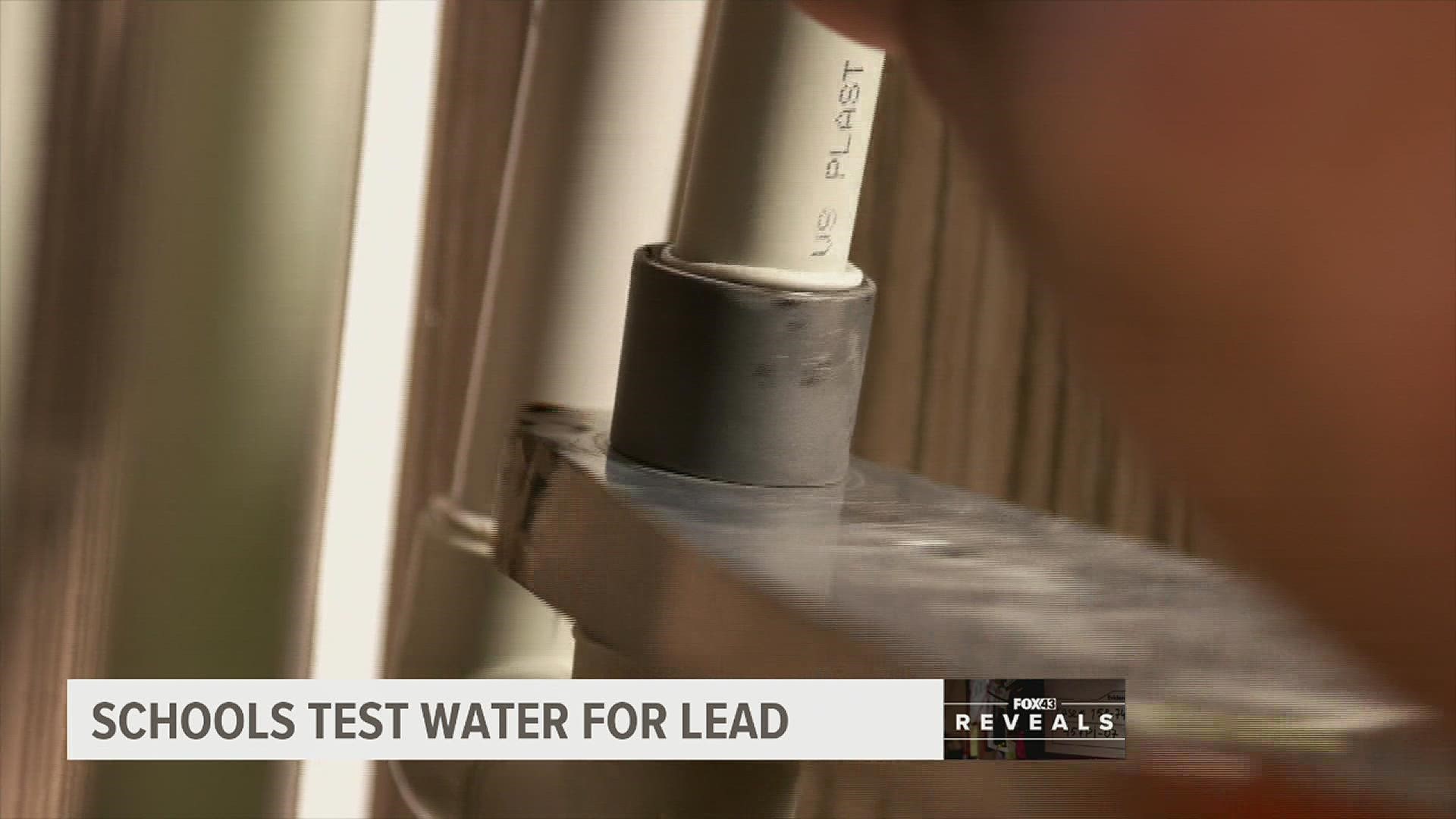LANCASTER, Pa. — Much of the Commonwealth is considered “at-risk” for lead exposure and some counties in South Central Pennsylvania have some of the highest rates of childhood lead poisoning in the state. Lead can be found in lead-based paint—something many older homes have in York and Lancaster counties—and some older school buildings still have lead pipes carrying their water.
A state law now requires schools to test for lead or publicly address in a school board meeting why they refuse to test for it. FOX43 Reveals how schools are tackling this issue and why health officials say every child should be screened for lead.
To Alexandra Bellegarde, screening her 2-year-old twin boys for lead is a no-brainer. She lives in an older home in the city of Lancaster and her older daughter previously tested positive for elevated levels of lead in her blood.
“Once the results came back where we saw she got lead poisoning, that’s when the whole reconstruction for the house started,” Bellegarde said.
Lancaster County has the 4th highest rate of childhood lead poisoning in the state, according to the Department of Health’s Childhood Lead Surveillance Annual Report released in January 2021. FOX43 Reveals that school districts are almost always finding traces of lead in their drinking water ever since the state recommended annual testing.
The School District of Lancaster (SDOL) had been hit especially hard. Lead testing results for the 2019-2020 School Year show 22 schools in the district had some trace of lead in their water and 12 schools reported unsafe levels of the toxic metal, requiring immediate remediation.
The U.S. Environmental Protection Agency’s recommended action level for lead is anything at or above 0.015 milligrams per liter (mg/L). One water fountain at Buehrle School contained levels 72 times higher than what's considered safe.
The district got to work removing sinks, installing new water fountains and flushing systems in the affected schools. Lead was so widespread at Price Elementary School that the district had to replace all copper lines and sink fixtures.
The district also installed around 100 filters throughout the school, which cost about $200,000. The discovery of lead puts districts in a tough position when it comes to determining the best way to move forward.
“Do we look at replacing all the plumbing in the building, which could cost hundreds of thousands, if not possibly a million dollars, or do we look at just providing what would be a five-year fix of adding filters on,” explained Matthew Przywara, Chief Financial Officer at SDOL. “So, we went with the filter route, which we thought was a good solution at the time. It was cost effective until we could get to Price in our renovation schedule and do a full overhaul.”
Limited funding is a major roadblock for schools looking to do lead abatement. FOX43 Reveals that schools across the state opted for short-term fixes after discovering lead in their water supply.
A review of the Pennsylvania Department of Education’s (PDE) Lead in Drinking Water Report for the 2020-2021 School Year shows hundreds of schools detected high levels of the toxic metal in their water.
However, no major renovations were immediately done. School districts reported to PDE that their remediation plans included shutting off sinks, posting “do not drink” signs, replacing filters, flushing systems, providing bottles of water to students, or removing fountains from service.
Click here for is a list of schools that recently reported elevated levels of lead in their drinking water and what they did to remedy the issue.
Municipalities are also facing challenges when it comes to lead abatement. Some city leaders say state or federal funding to remove lead-based paint from homes is dwindling.
“We’ve had some hiccups with getting contractors and also getting persons who qualify to participate with it, so we’re chipping away at it slowly,” said Marilou Yingling, coordinator of the City of York’s Bureau of Health.
Many Pennsylvania families may not know they are at high-risk for lead exposure. It can be especially harmful to children, who absorb it more easily.
Health officials say lead screening at a young age is critical. The American Academy of Pediatrics (AAP) states that lead toxicity results in substantial, population-level effects on children’s intellectual abilities, academic abilities, problem behaviors, and birth weight.
“It often goes undetected. It causes brain injuries. It causes learning disabilities,” explained Carli Bechtold, Community Paramedicine Program Supervisor at Lancaster EMS.
AAP recommends blood lead screening as part of routine health supervision for children at about nine through 12 months of age and, if possible, again at about 24 months of age.
Bellegarde's twin boys may not remember the moment of getting their fingers pricked for their blood lead test, but it could be a life-saving one.
“And a healthy baby is more than enough! That’s all I can say,” Bellegarde said.
If you think your child is at risk for lead exposure, talk with your doctor about lead screening. Also, schools that detect high levels of lead in their drinking water are required to post the results on their website.
FOX43 Reveals issues that affect you and your family to keep you informed. Do you have a story you want us to investigate? Send us an email at FOX43reveals@FOX43.com.

